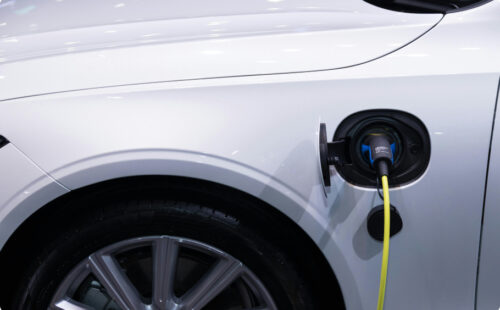EV & EV Charging
Subheading
The transition to vehicle electrification is here, with bans on the sale of internal combustion engine (ICE) vehicles coming into force from 2030. Supporting the scale-up in electric vehicles (EVs) necessitates continued innovation and investment in the development of EVs and the charging infrastructure, alongside development of the software that is needed to ensure that drivers can charge reliably when they need to and enable EVs to play an active role in supporting flexible electricity grids, delivering cheaper and greener energy.
Many drivers, fleet operators and investors are seeking to understand what this transition to EVs means for them. This is where we can help.

OPPORTUNITY
The roll out of EV charging stations was initially led by government funded schemes, but private charge point operators (CPOs) have emerged and are leading on the installation of EV chargers. These CPOs are innovating, providing charging solutions that meet customer needs, from large rapid charging hubs through to individual on-street charging solutions.
Private and institutional investors are increasingly supporting this, investing in the development of hardware and the roll-out of the infrastructure, as they gain comfort with the business cases and the size of the market opportunity.
In Europe, the EU has introduced regulations such as the Alternative Fuel Infrastructure Regulation (AFIR) and The Energy Performance of Buildings Directive (EPBD). The AFIR supports the installation of fast charging stations along the EU’s main transport corridors, whereas the EPBD focuses on the energy efficiency of buildings, with new buildings required to be Net Zero by 2030, including the installation of EV chargers in all existing and new buildings. These initiatives go a long way to support the roll out of EV charging infrastructure.
How do we ensure the infrastructure is ready?
Can we improve the customer charging experience?
What are the challenges for the electrification of fleets?
How do we harness EV’s to support grid flexibility?
How do we deliver fit for purpose EVs?
OPPORTUNITY
For many drivers, the charging experience is key to the adoption of EVs. Drivers are used to arriving at a petrol pump, filling-up and knowing what it’s cost. They also see these pumps as always available and quick. So, to fully embrace EVs, they need a charging experience that is seemless, reliable and easy to understand – to dispel the notion of “range anxiety”.
Providing real-time visibility on the location, availability, charging cost and charging time are all key to delivering good customer experience. CPOs are also innovating in payment methods, with full contactless payment now mandatory, and moving closer to a truly seemless “plug-and-charge” solution – replicating the market leading Tesla charging experience.
Supporting CPO service providers in their go-to-market strategies and partnership development has provided us with unique insights into the delivery of innovative, fit-for-purpose charging solutions for customers.
How do we ensure the infrastructure is ready?
Can we improve the customer charging experience?
What are the challenges for the electrification of fleets?
How do we harness EV’s to support grid flexibility?
How do we deliver fit for purpose EVs?
OPPORTUNITY
Fleet owners are currently the largest purchasers of EVs, but many fleet operators still struggle to understand how they can electrify their fleets. Developing a combined strategy of vehicle selection and supporting charging infrastructure is key, to ensure that vehicles are fit for purpose and can be charged and fully available when needed. From taxi operators, logistics companies through to blue light services, it is critical to ensure that there is full integration between vehicle use schedules and EV chargers that can deliver timely and optimised battery charging.
Can we improve the customer charging experience?
What are the challenges for the electrification of fleets?
How do we harness EV’s to support grid flexibility?
How do we deliver fit for purpose EVs?
How do we ensure the infrastructure is ready?
OPPORTUNITY
Unlike conventional internal combustion engine (ICE) vehicles, EVs provide an opportunity for full integration of transportation and energy, in this case, the electricity network. As the network transitions to Net Zero, the ability to optimise the grid, to use more renewable energy, will require a more flexible grid, flexing demand/supply and using storage where needed. EVs provide an invaluable contribution here, by flexing when they charge, to match the availability of renewable energy, and using their batteries to store energy when there is over supply. Through the development of vehicle-to-grid (V2G) capability, both in hardware (vehicles and chargers) and enabling software, EVs provide support for grid flexibility.
We have worked with CPOs and software providers that are active in grid flexibility and V2G solutions, as well as stand-alone battery storage providers. This has given us a strong understanding of this emerging space and the alternative business cases.
Can we improve the customer charging experience?
What are the challenges for the electrification of fleets?
How do we harness EV’s to support grid flexibility?
How do we deliver fit for purpose EVs?
How do we ensure the infrastructure is ready?
OPPORTUNITY
The push to ban the sale of new ICE vehicles and the adoption of Low Emission Zones (LEZs) in urban environments, requires EV manufactures to develop vehicles that fully meet customer needs, are affordable and are adapted to our changing cities. EVs are often seen as more expensive, heavier and bigger than the ICE vehicles they replace, which is driving innovation in smaller, cheaper vehicles and new business models.
Our team has worked across this space, to guide the development of innovative last mile delivery EVs and the introduction of EVs through subscription based services and car sharing schemes.
Can we improve the customer charging experience?
What are the challenges for the electrification of fleets?
How do we harness EV’s to support grid flexibility?
How do we deliver fit for purpose EVs?
How do we ensure the infrastructure is ready?



